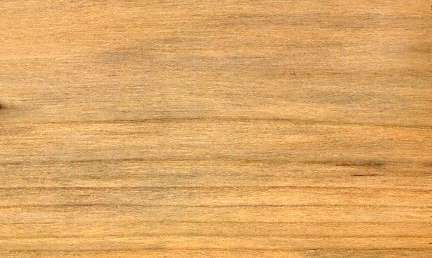
Bangikat poplar (Populus ciliata)
Family: Salicaeae
Common names: Asan, Bagnu, Ban pipal, Bangikat poplar, Chanun, Chelaun, Cottonwood, Dud phras, Falis, Gad pipal, Krammal, Pabe, Palach, Paluch, Phalassu, Phalja, Piplas, Plachh, Poplar, Rikhan, Safeda, Sharphara, Suali
Distributed in: Bhutan, China, India, Nepal (Oceania and S.E. Asia)
Distribution overview: The timber is distributed in the Himalayan region in India, from Kashmir to Bhutan, at elevations of 4000 to 10000 feet (1220 to 3050 m).
Common uses: Baskets, Food containers, Matchboxes, Matches, Turnery
Environment profile: Vulnerable within its natural growth range
Tree size: Trunk diameter is 150-200 cm
Colors: the heart isPurple, Redand the sapwoodWhitish, Yellow.The grain isStraight, the textureUniformand the lusterMedium
Natural durability: Perishable, Susceptible to insect attack
Kiln Drying Rate: Naturally dries quickly
Drying Defects: Resin Exudation, Splitting
Ease of Drying: Reconditioning Treatement
Blunting Effect: Little
Boring: Fairly easy to very easy
Carving: Fairly Easy to Very Easy
Cutting Resistance: Fairly Difficult to Very Difficult to saw
Gluing: Fairly Easy to Very Easy
Mortising: Fairly Easy to Very Easy
Moulding: Poor to Very Poor
Movement in Service: Poor to Very Poor
Planing: Very Good to Excellent
Resistance to Impregnation: Permeable sapwood
Response to hand tools: Responds Readily
Routing recessing: Fairly Easy to Very Easy
Sanding: Very Good to Excellent Results
Veneering qualities: Veneers easily, Veneers moderately easy
Steam bending: Fair to Good Results
Turning: Very Good to Excellent Results
Painting: Fair to Good; Polishing: Poor to Very Poor; Staining: Fairly Difficult to Very Difficult; Varnishing: Fairly Difficult to Very Difficult
;
- Numerical data Metric
- Numerical data English
- Strength properties
- References
 |
 |
 |
 |
| Item |
Green |
Dry |
Metric |
| Specific Gravity |
0,35 |
0,37 |
|
| Density |
|
432 |
kg/m3 |
| Bending Strength |
323 |
671 |
kg/cm2 |
| Crushing Strength |
15 |
31 |
kg/cm2 |
| Hardness |
|
193 |
kg |
| Impact Strength |
48 |
71 |
cm |
| Shearing Strength |
|
64 |
kg/cm2 |
| Stiffness |
76 |
104 |
1000 kg/cm2 |
| Tangential Shrinkage |
10 |
|
% |
| Radial Shrinkage |
4 |
|
% |
| Weight |
592 |
416 |
kg/m3 |
| Maximum Load |
0,28 |
0,63 |
cm-kg/cm3 |
| Toughness |
|
|
cm-kg |
| Static Bending |
159 |
397 |
kg/cm2 |
|
 |  |  |  | | Item | Green | Dry | English | | Bending Strength | 4596 | 9555 | psi | | Crushing Strength | 216 | 451 | psi | | Density | | 27 | lbs/ft3 | | Hardness | | 426 | lbs | | Impact Strength | 19 | 28 | inches | | Maximum Crushing Strength | 2029 | 5145 | psi | | Shearing Strength | | 916 | psi | | Static Bending | 2274 | 5655 | psi | | Stiffness | 1083 | 1492 | 1000 psi | | Work to Maximum Load | 4 | 9 | inch-lbs/in3 | | Specific Gravity | 0.35 | 0.37 | | | Weight | 37 | 26 | lbs/ft3 | | Radial Shrinkage | 4 | | % | | Tangential Shrinkage | 10 | | % | | Volumetric Shrinkage | 15 | | % | |
Weight = moderate
Low resistance to denting and marring
Hardness (side grain) = soft
Density = medium
Compression strength (parallel to grain) = low
Bending strength (MOR) = medium
Limaye, V.D.1954. Grouping of Indian Timbers and their Properties, Uses and Suitability. Indian Forest Records, New Series. Timber Mechanics, Vol. 1, No. 2, Forest Research Institute, Dehra Dun, India.Limaye, V.D. and B.R. Sen. 1953. Weights and Specific Gravities of Indian Woods. Indian Forest Records, New Series. Timber Mechanics, Vol. 1, No. 4, Forest Research Institute, Dehra Dun, India.Rawat, B. S., Rawat, N. S., Sekhar, A. C., Bhatnager, S. S. 1957. Physical and Mechanical Properties of Timbers Tested at the Forest Research Institute, Report XI.Indian Forest Records, Timber Mechanics Branch,Volume 1 No. 12, Dehra Dun, IndiaTroup, R.S. 1909. Indian Woods and Their Uses. The Indian Forest Memoirs, Economic Products Series, Volume 1, No. 1. Superintendent, Government Printing, Calcutta, India.WCMC. 1992. Conservation Status Listing - Trees and Timbers of the World. World Conservation Monitoring Center-Plants Programme, Cambridge, CB3 ODL, United Kingdom.
|








